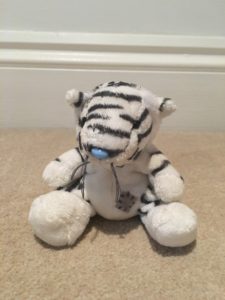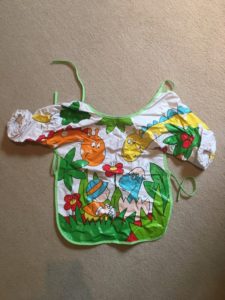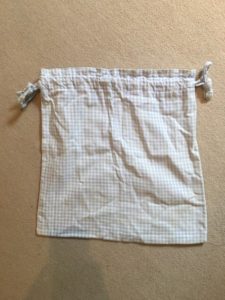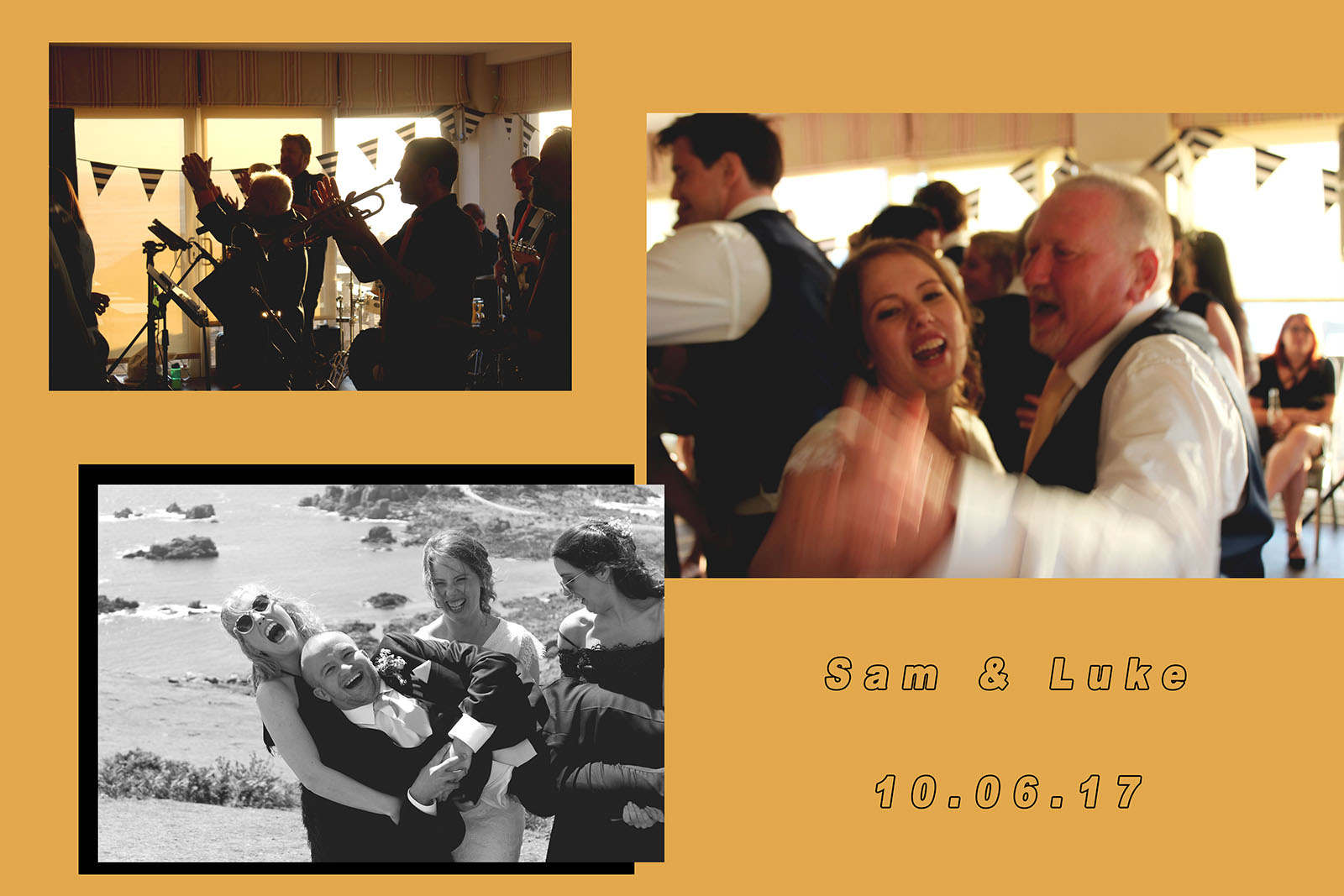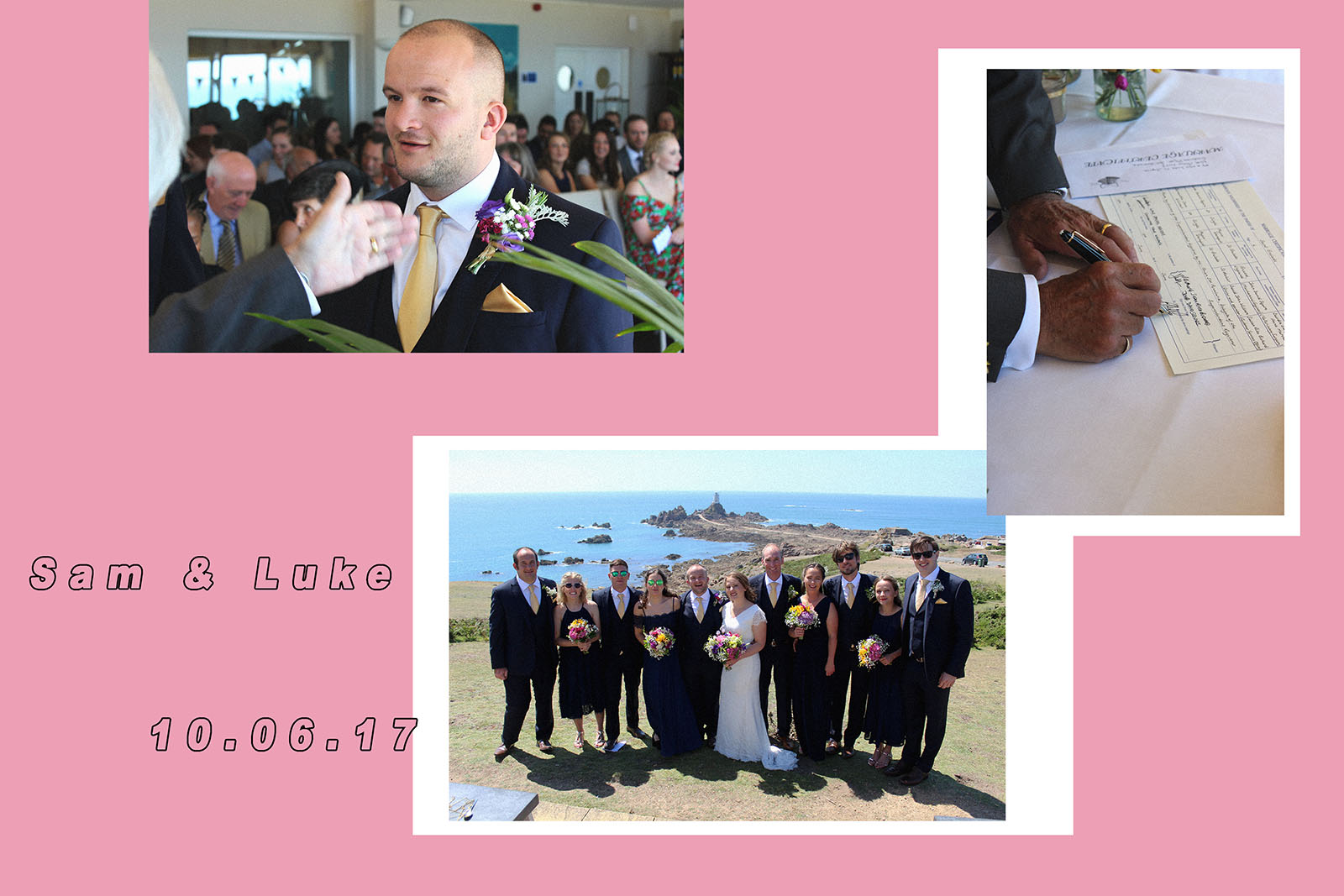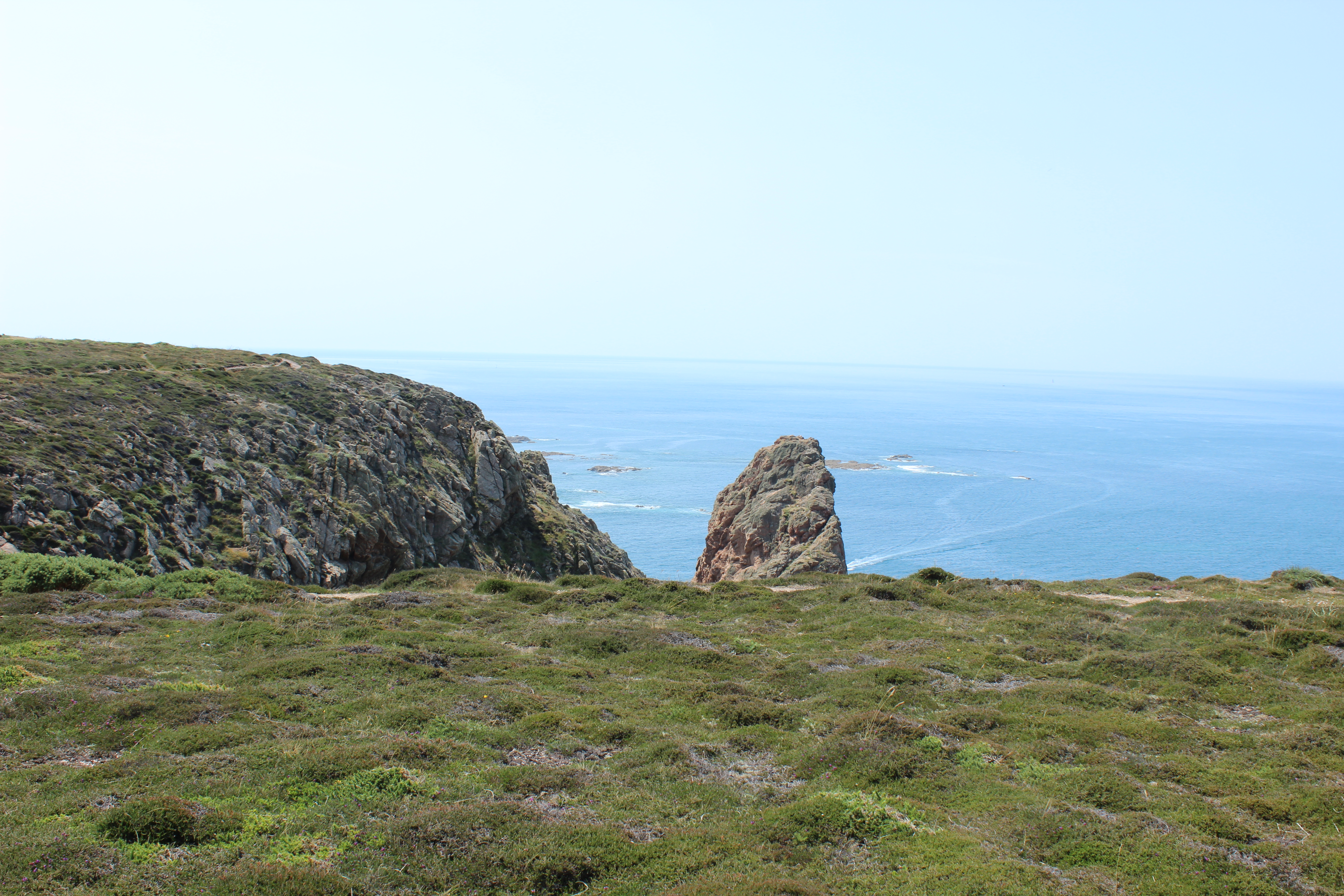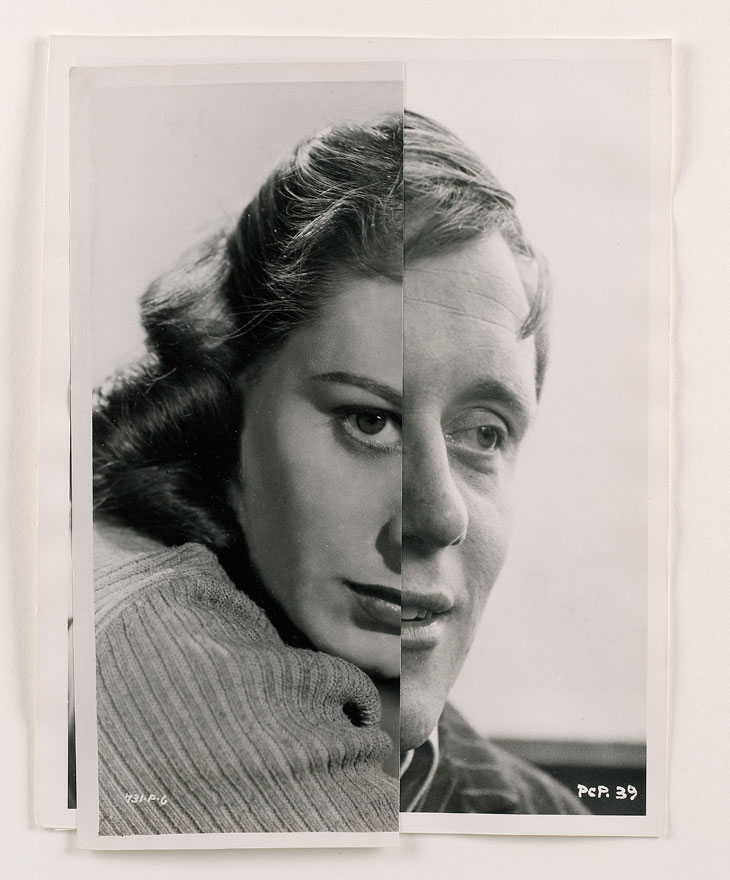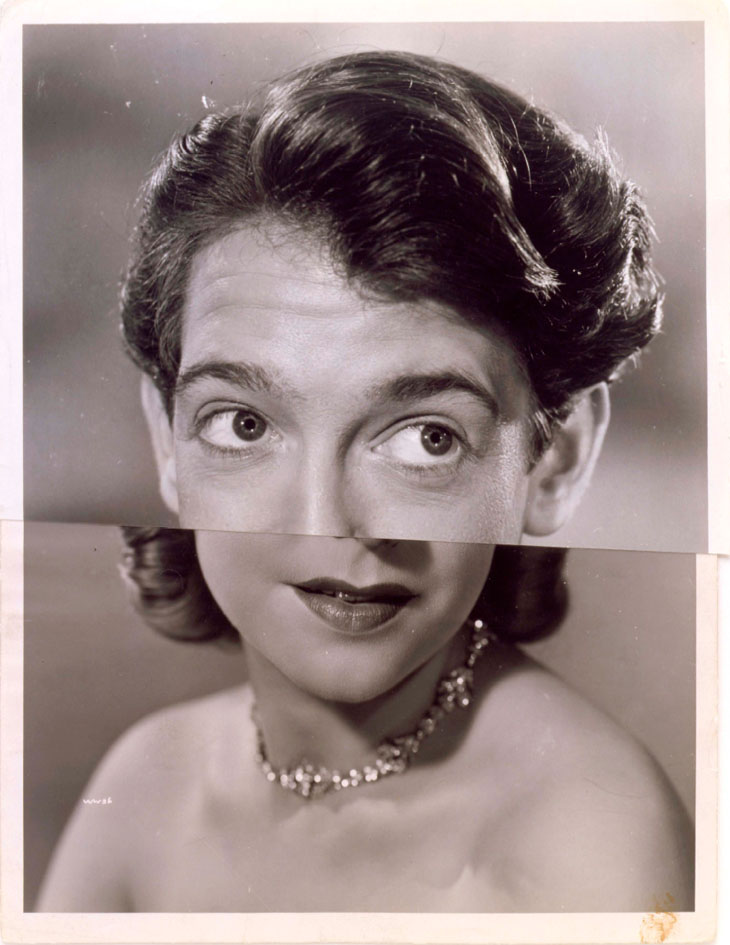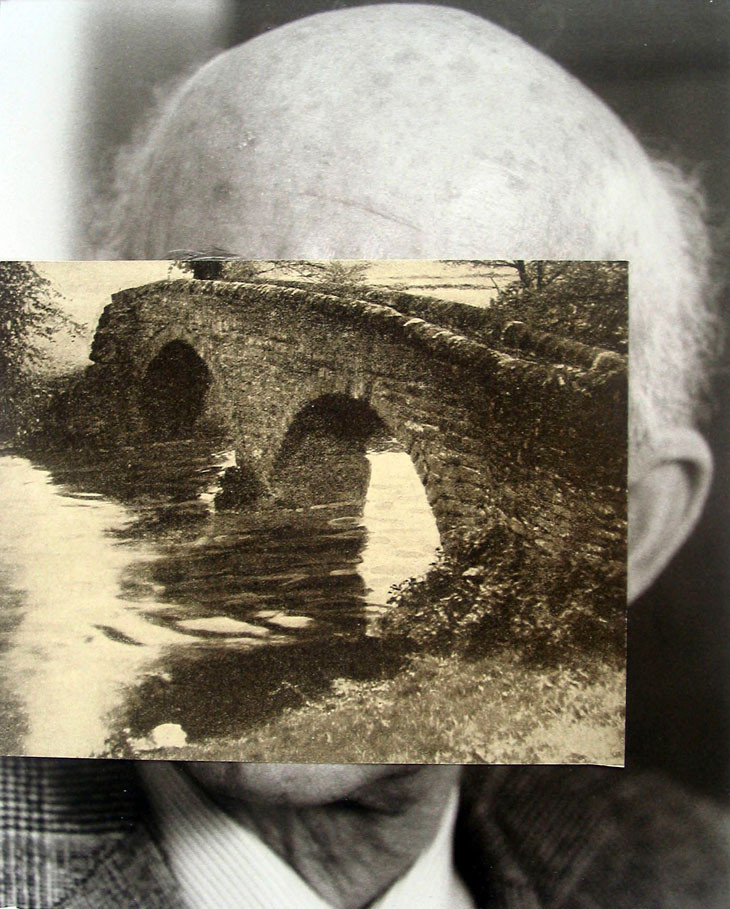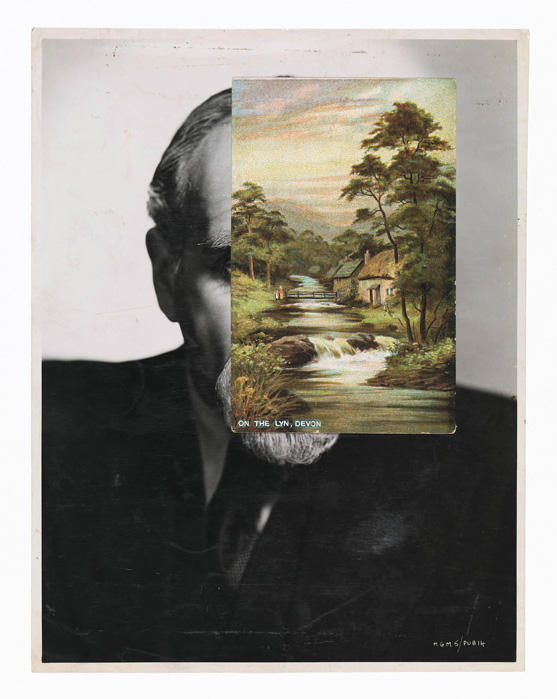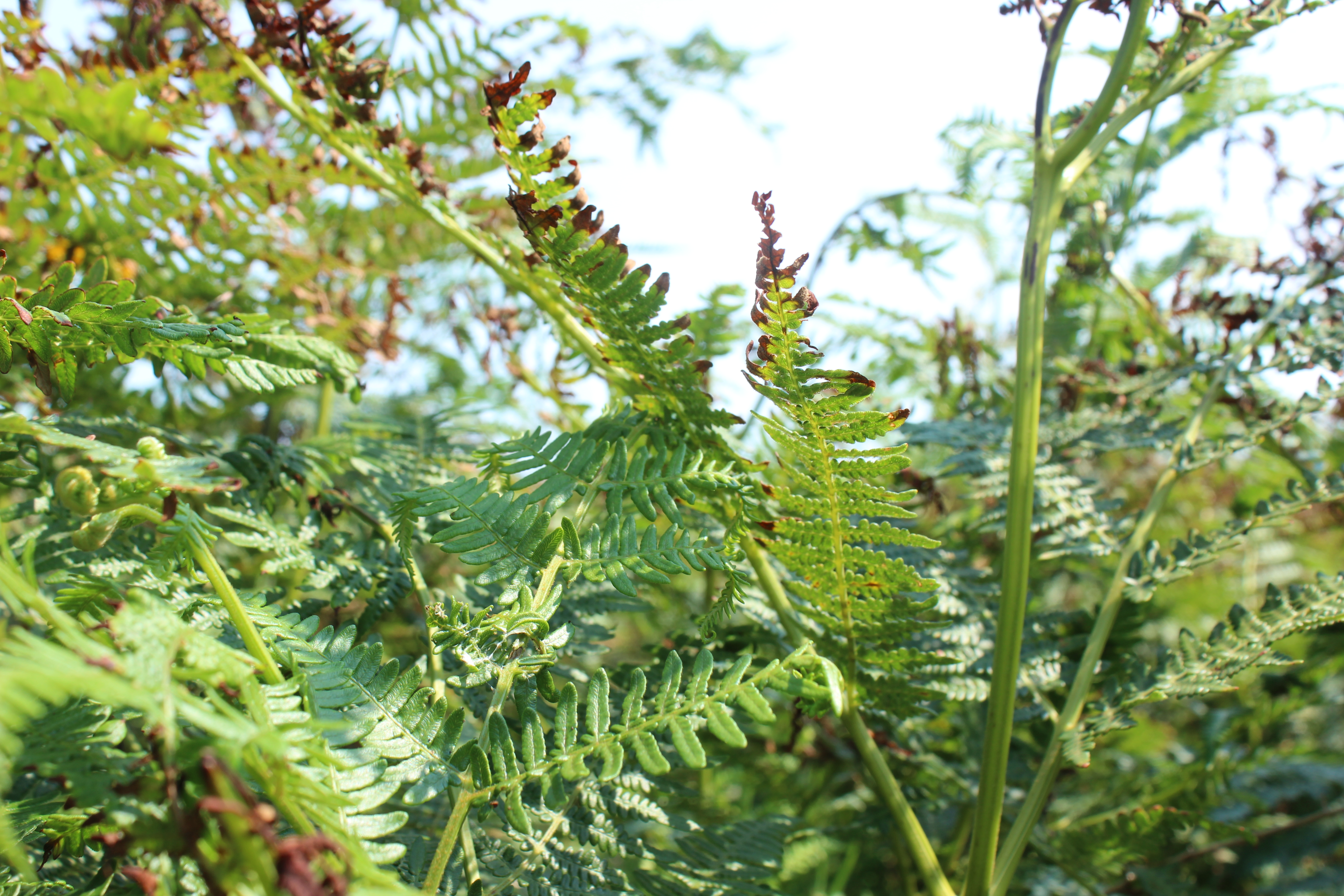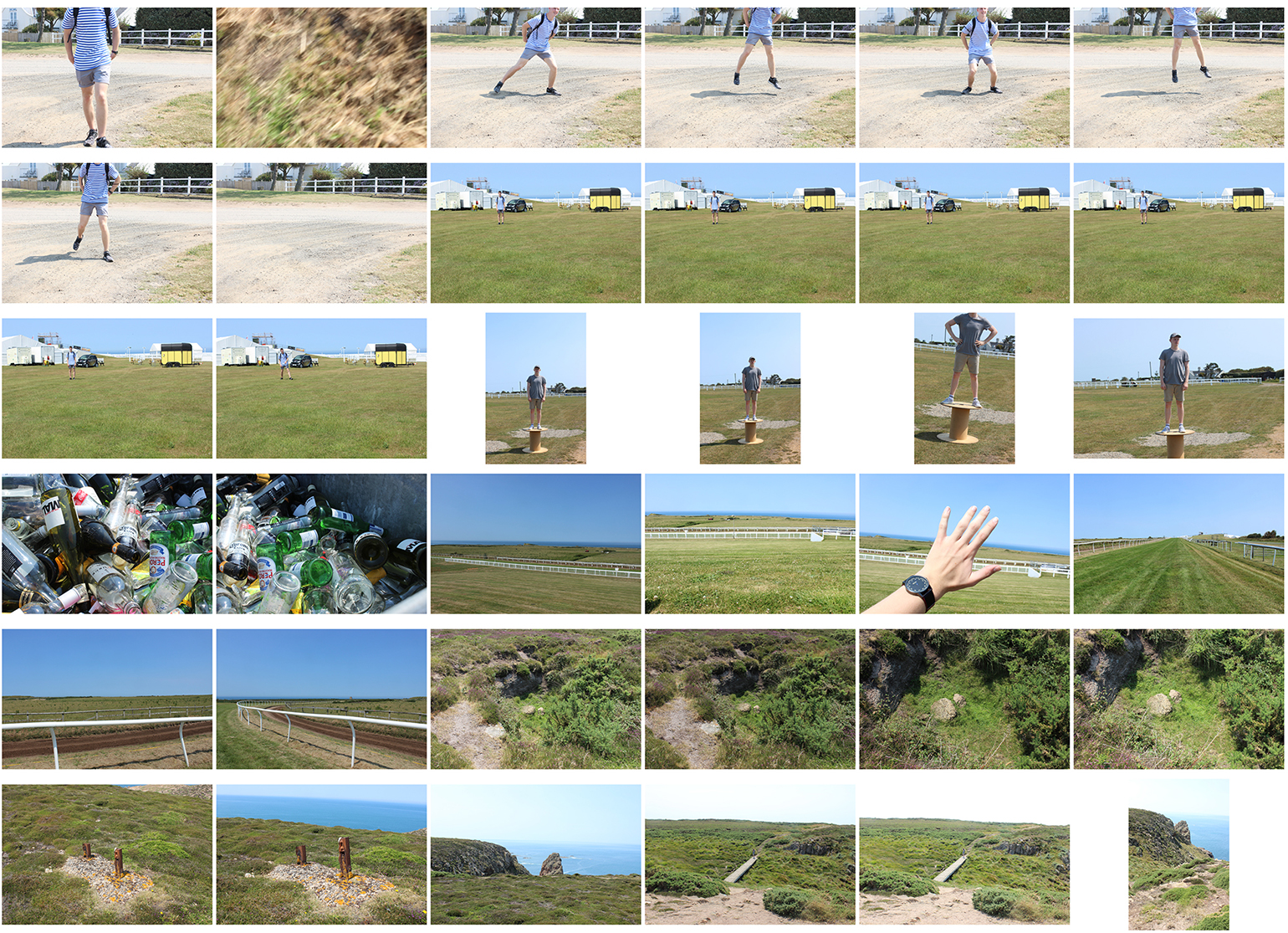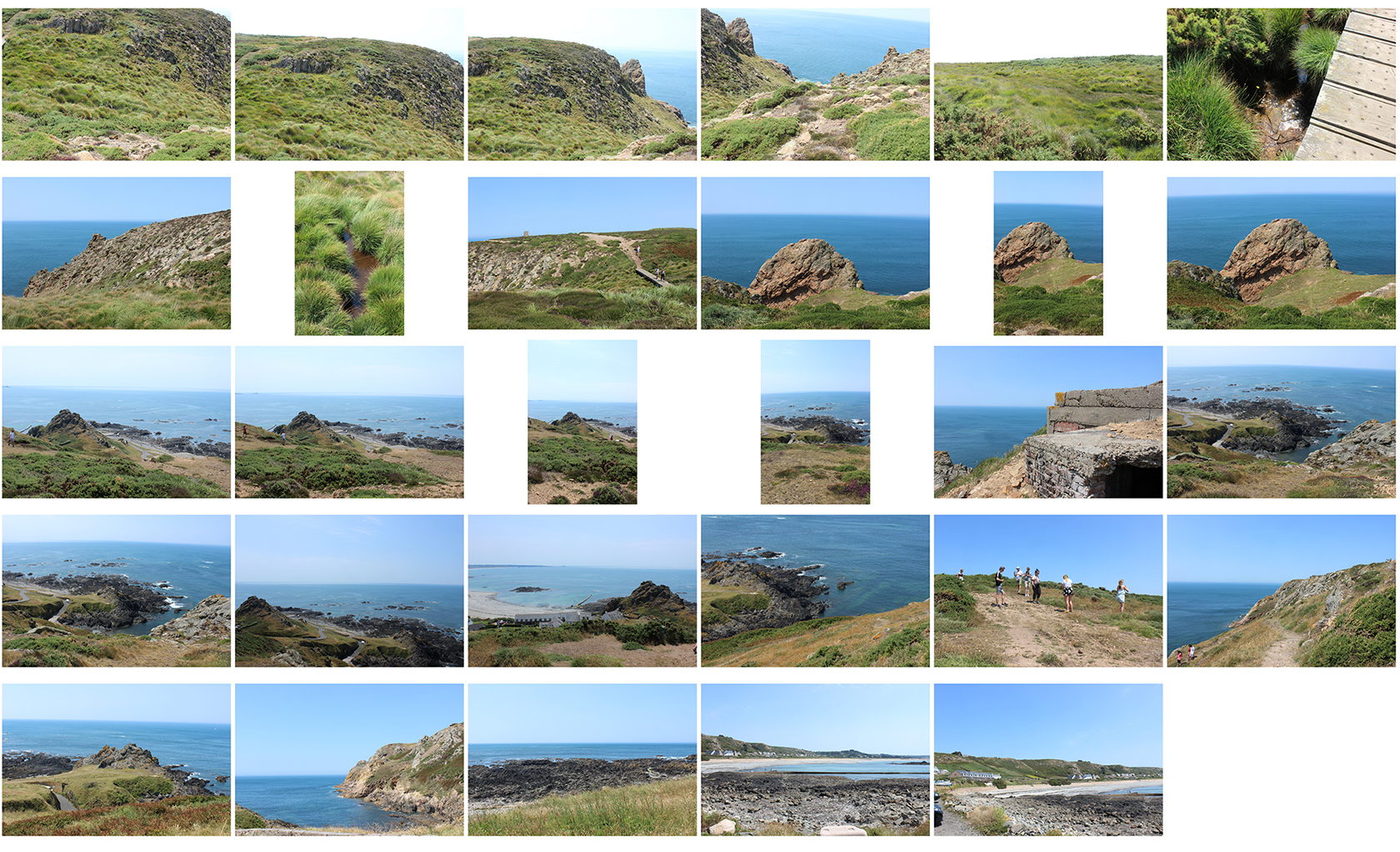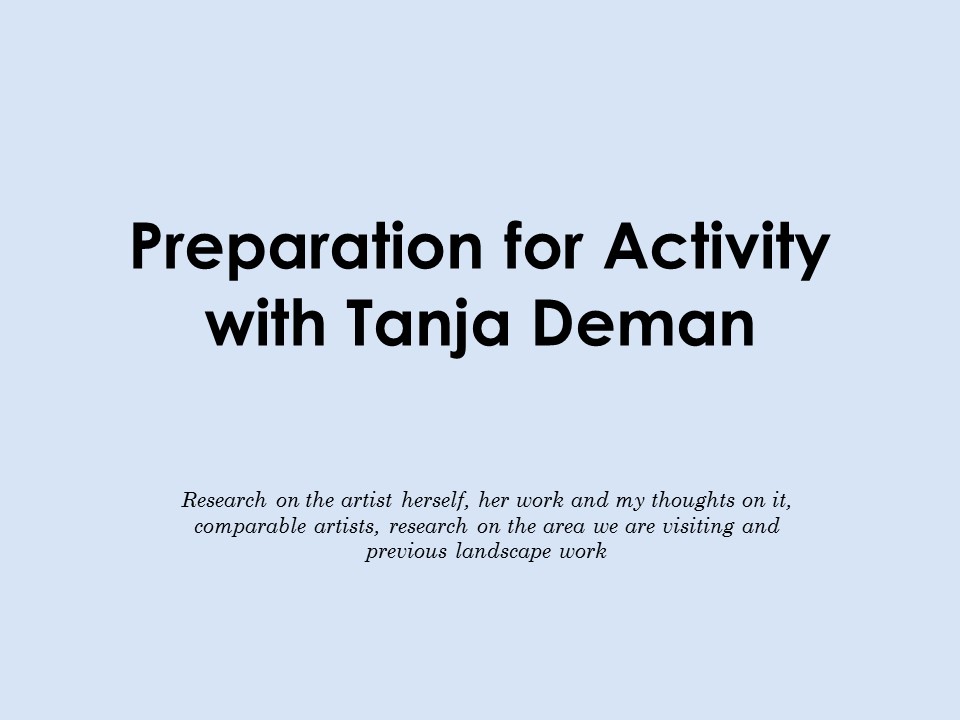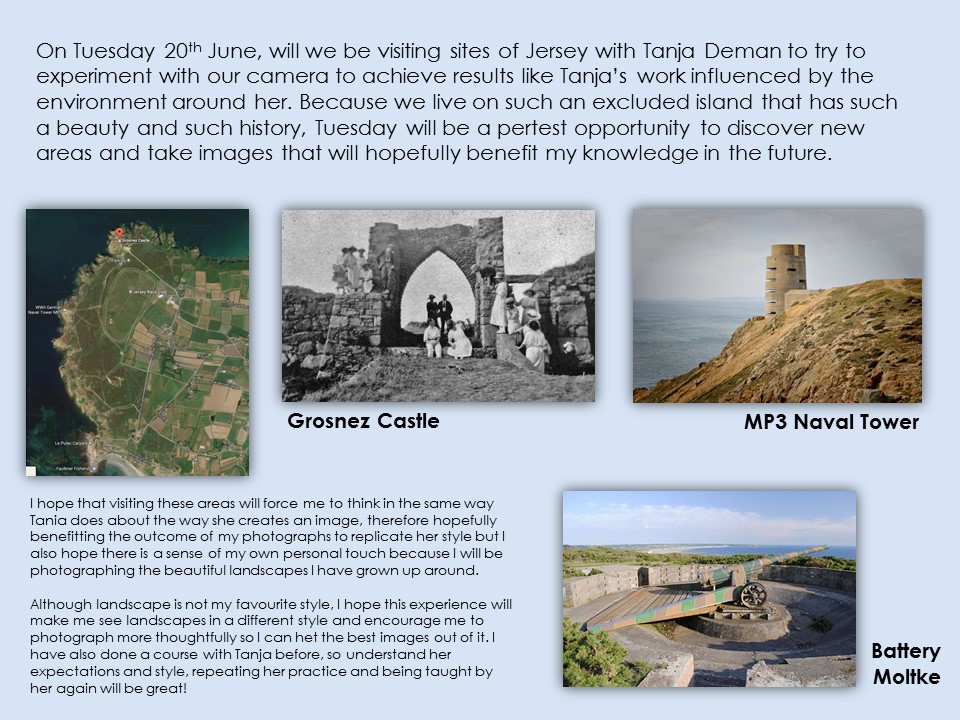On 04/07/17, Jonny Briggs came in to school to give us another talk and include us in his style of work again. He had more tasks set up ofr us to immerse ourselves into the style of photo collage and he gave us a briefing about his work again to refresh us. The more intimate and inclusive experience was really helpful and beneficial to my development in the field of photo collage and producing work int he style of both Jonny and Tanja.
The session began with Jonny asking us is we had any primary questions for him to answer. Then he began to talk to us about his recent works in Jersey and what he is doing in his residency that could provide an influence to what we produce. The most prominent topic of discussion was the thought of fear within work and if it is an aid to the creative process. A heated discussion on this concept leas to many different views about the question Jonny asked us – whether fear is a good thing, or if something good can come from mistakes in a creative process. Jonny began to tell us about a piece of work he is really focusing on in his residency and tat he feels has the most relevance to his life. He told us that he has a focus on creating series of works in locations of authority and an explanation he provided for this was that an authoritative figure was missing from his family when was younger as his relationship with his dad was lost but he re-gained this sense of authority in his life through the school he wen to being very strict. He said that he has a plan to produce a photoshoot in the old police station, in particular in its evidence room where there are empty shelves throughout the room. He plans to cover the room in red lipstick and says that this freedom to essentially create a mess makes up fro the strict upbringing he had where at times he would feel dislocated. This gives him freedom to make something that has an association with desire and something that possesses a sexual connotation into a thought of disgust if shown in large quantities – as in this sticky mess. I found this relation to family, although strange and unpredictable very interesting. He told us that fear should not be a thing that hinders the creative process and you should embrace it. He then transferred the question to us and told us to give our opinions on whether fear is a good thing and something that helps us move forward with our work. I personally believe this is true because a good artists will take the idea of fear and use to their advantage to produce something that questions the normalities of art. I said that in my personal experience, if I came across something that scared me, and if I did not not know what I wanted to do in order to advance and complete something, I would freak out and essentially implode with stress and fear but this would spur me onto to do better – I would use it as a tool of determination and use it to motivate myself. The idea of forcing myself to achieve a goal even it requires me to go outside my comfort zone is a determiner of success because it means I am trying new things and the risk you take as to whether the outcome will be a success is all part of the creative process and how you learn from your mistakes. This idea made me think more about how I can use fear to improve my work and I think I will take into account that when I don’t know what I’m doing, I should fight that and remove the blanket of comfort – as Jonny described it and move forward.
Jonny then set up a task for us to do and he told us to draw a face – any face at all – a generic face, but with our eye closed. He gave us 3-4 minutes and then we had to open our eyes and see what we had produced. It was very weird to see what we had drawn because obviously the image was not what a face would look like because usually when you tell someone to draw a face, they would spend lots of time finalizing the intricate details of the features but crating s simple drawing with no boundaries apart form the limitation of us being blind created much freedom for me experiment and go wild with my thoughts. Although it looked very odd, there is no rule that states something does not look how it should or that if something does not provide a direct representation isn’t good. Breaking boundaries can result in a pleasing result and differentiation is a tool for creating new work as it can encourage new thoughts and new ideas from seeing things in new perspectives. I really enjoyed the task as it allowed dot be free in what I produced with no one to tell me that it is not good – and this is how everyday art should be.


I then drew an image of someone in the room, I chose to draw Harrison. I found this task much more difficult than the first because I was given a criteria to fill and limited my freedom for creativity in a way because I was not allowed to draw anything knowing that it would be accepted either way; I had to draw someones face and use my memory to put the features in the correct position. This task limited me more so and I therefore did not enjoy it as much. I would prefer to be told to get on with something and then do it in my own personal way that suits my style. This is how many photographers and artists get by nowadays because creativity and uniqueness is key. However, there is a theories who stages. His name is Kirby Ferguson and he says tat you cannot create without being influenced by others. I can totally agree with this but he also goes as far as to say that there is no originality in art today because each idea is derived form something that already exists. He describes the idea of copying as ‘simple-mimicry’ which I find quite fascinating and amusing because, yes, to some extent it is true.
Overall, I really enjoyed the workshop with Jonny because he is a modern day photographer who suits my style of work and he addresses personal issues through his now art which I admire and think is very brave – which I will have to become as I unveil my own archives gradually. He also wanted us to use the objects and images we brought in to create some photo collages or photographic scenes that mean something to us and gave us a task for homework to find five was to destroy an image. I am eager to get going with this and hope to conjure up some weird and ‘outside of box’ methods. I will publish these once finalized.
Here are the objects I brought in:
